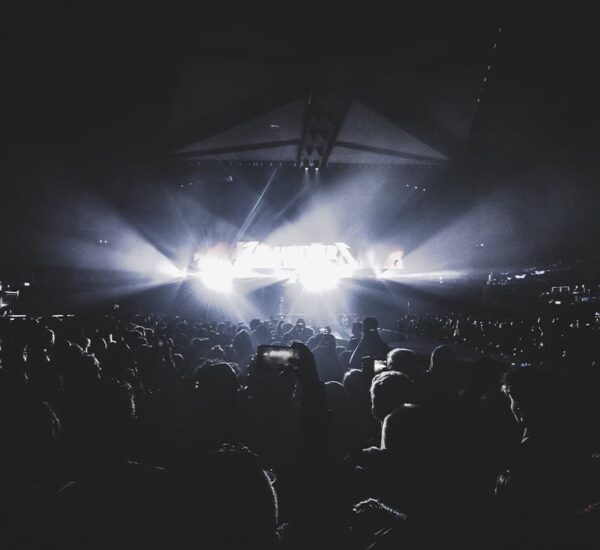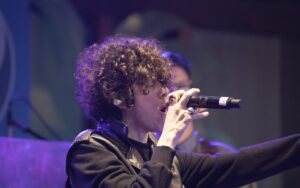The English band My Dying Bride has been playing their specific subgenre of rock music for almost three decades. They, along with Paradise Lost, are credited with being the founders of the death-doom metal genre.
The songs of My Dying Bride are not the kind of music you would listen to every day. Depressive melodies, slowly alternating guitar riffs, oppressively tragic keyboards set off by heavy drums along with soul-breaking violin and darkly romantic lyrics – all this is their own MDB classic, which they’ve stuck to since their first day (except the violin wasn’t always present).
Born in the Shadows
The band My Dying Bride entered the rock scene from the shadows in 1990. Literally. On a June evening in a British joint called Shades, four musicians decided to form their own band.
The original line-up was represented by guitarist Calvin Robetshaw, vocalist Aaron Stainthorpe, drummer Richard Miah (now replaced by Dan Mullins) and another guitarist Andrew Craighan.
In the long history of the band, the members of the band changed many times. A year later, bassist Adrian Jackson (now bassist Lena Abe) joined the band, and in 1993, violinist and keyboardist Martin Powell joined MDB, bringing the goth-metal elements to their songs, which eventually became the band’s trademark. In the ’90s, he was alternately replaced by Sarah Stanton and Katie Stone, until Shaun Macgowan took over the keyboards in 2009.
Since 1999, only two of the original members have played in the band: Aaron Stainthorpe and Andrew Craighan. Until 2015, after a 15-year hiatus, Calvin Robetshaw returned.
My Dying Bride’s early successes.
After the band was founded, it was quiet for a while: the musicians were adapting to each other and working on their material. Six months later they released the demo “Towards the Sinister” which was later recognized by the fans as legendary.
In a year MDB released their debut EP “God Is Alone” which instantly flies off the shelves of music stores. After the successful debut of this song My Dying Bride started recording on the famous Peaceville Records label. All subsequent albums the band released under their brand.
The first full-length discography album of My Dying Bride – “As The Flower Withers” – was released in 1992, and by its genre definition belongs to pure Death/Doom Metal. After this record the band toured Europe and Britain with concerts for some time.
The release of the EP “Thrash of Naked Limbs” became a serious success for the band, which consolidated the upper layers of the Kerrang charts for some time. Since that moment the fans and music critics began to name MDB among the pioneers of death-doom metal, despite the fact that this genre was 10 years older than the band.
Numerous creative developments of My Dying Bride
Up to 1998 MDB release three more loglists – Turn Loose the Swans (1993), The Angel and the Dark River (1995), Like Gods of the Sun (1996). During this time new members were coming and going, and the vocalist Aaron Stainthorpe began to sing the lyrics not only with growling, but also with clean vocals.
Then the musicians decided to experiment with their style and the result was the album “34,788%… Complete”, where they stepped away from the familiar doom metal and put the stress on the electronic and industrial music. Some fans criticized the band for this change of genre; others, on the contrary, still consider “34,788%… Complete” to be the best record in the discography of My Dying Bride.
The change of style was, in some places, forced. The current drummer Richard Miah had to be replaced by Bill Low for a while because of an injured hand, which, of course, affected the sound. On top of that, keyboardist and violinist Martin Powell left the band. It was because of his parts that the songs of My Dying Bride differed so much from other bands in the death death metal genre.
The album name and style also appeared spontaneously. According to the band members, the mysterious number means the time that mankind has already lived. And the numbers were not taken spontaneously: they were a dream to guitarist Robetshaw.
The following discography of My Dying Bride returns, for the most part, to classic doom metal, but with a slightly new look at the sound. During the next 10 years the band released 5 more loglists (except the names of the albums not much is known about this period even on My Dying Bride Wikipedia page).
Once again, the musicians tried to experiment with style, releasing the album “Evinta” (2011) for their 20th anniversary. It contains the best compositions of that time in an unusual for the band neoclassical and ambient arrangement.
Another experiment was the 27-minute single-track EP “The Barghest O’ Whitby”.
After recording the album “A Map of All Our Failures” in 2012 (ranked fifth in the top ten doom records by WhatCulture), MDB went quiet for 3 years to present the pinnacle of their creativity – “Feel the Misery” in 2015.
My Dying Bride’s album “Feel the Misery” welcomes death metal fans with dark lyrics, ingenious powerful guitar parts and alternation of growling with clean vocals. The special “cherry on the cake” of the release is the moody and heavy song of the same name, which calls for experiencing all possible sufferings in just over 6 minutes.
Today, “Feel the Misery” is the band’s last original album, unless you count the best tracks compilation “Meisterwerk III” recorded in 2016.
The band also has no new releases planned for 2017. And you can see and hear My Dying Bride live at the Roadburn Festival in Holland on April 22.
“My Dying Bride” 27 years later is invariably alive.
Like any other “monster” of the rock scene, My Dying Bride has played an enormous number of concerts during its existence. The most significant of them were the concerts at the Dutch festival “Dynamo Open Air”, in America as the support band for Dio, and joint tours with Iron Maiden, Cathedral and Sentenced.
All these years the band stayed true to itself: neither new trends in music, nor numerous changes in the line-up influenced MDB cardinally. Certainly, each new album of My Dying Bride was more qualitative, deep and fresh in sound, but in fact all of them remained faithful to the same genre vector which was chosen in the very beginning.
P.S.: If you are not a fan of death/doom/gothic metal, but still want to listen to My Dying Bride, I recommend their brilliant cover of “Some Velvet Morning”, originally performed by Nancy Sinatra and Lee Hazlewood back in 1967, as a “light” option to explore.


